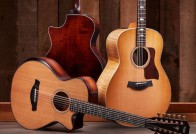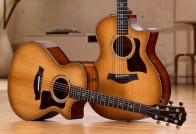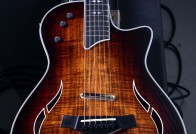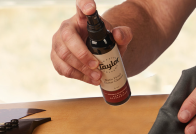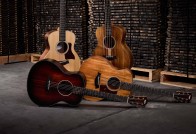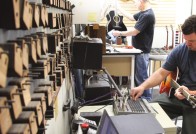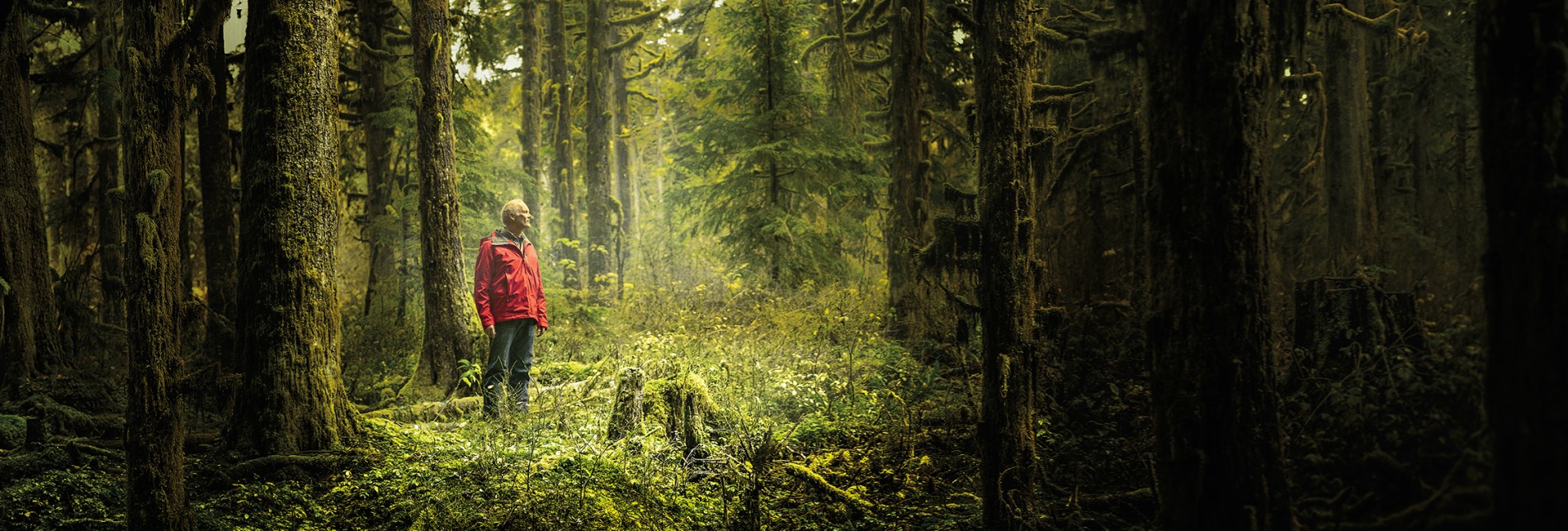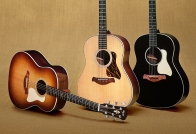
Steve McMinn and his crew at Pacific Rim Tonewoods in Washington State cut the lion’s share of spruce used on guitars in the U.S. Like Bob Taylor, Steve discovered a passion for his work at the intersection between wood and music.
The son of a forester in the Pacific Northwest, Steve worked as a logger to put himself through college, worked on trail crews for the U.S. Park Service, and deepened his appreciation for environmental stewardship along the way. His interest in sourcing tonewoods for musical instruments was sparked after building a guitar from a kit he ordered and realizing the quality of the woods he received was inferior to what he could get himself. So he started purchasing storm-downed Sitka spruce from U.S. Forest Service land in Alaska and Washington. In the beginning he’d hike into the forest, split a choice spruce log into blocks, and backpack them out. He also learned what luthiers look for in a spruce top, and refined his milling operation to provide clients with the best possible materials. Steve first started selling spruce to Taylor in the late 1980s — when Taylor was making about eight guitars a day — and he and Bob bonded over their complementary crafts and similar approaches.
“Steve quietly chips away at things like I do,” Bob says. “He just takes initiative and does things on his own.”
In addition to being a longtime spruce supplier, PRT also mills cedar, maple, and Hawaiian koa for Taylor and other guitar companies. Over the years, Taylor’s wood team has developed a highly collaborative, solution-minded working relationship with PRT.
I’ve always looked for intelligence and passion and longevity with our suppliers,” Bob says. “Steve embodies that to the fullest.
Maple: Clean, Green, and Legal
Steve’s love of forests, science and the big picture led him to start thinking about the future of tonewoods. As old-growth trees are harvested, as tropical woods become more difficult to ethically source, and as the climate changes, we need to think differently about how we source tonewoods. To that end, Steve has spearheaded a number of research projects having to do with the propagation of desirable lines of tonewoods.
Although maple is an ideal tonewood, in past decades it has been undersung. Many luthiers and consumers have been drawn to tropical woods like rosewoods and mahogany. Now, though, as those woods become harder to obtain, luthiers are rediscovering — and loving — maple.
Figure in maple, especially fiddleback, is particularly desirable, if serendipitous and rare.
“It’s always a hunt to find good figured maple,” Steve says. “And there’s remarkably little known about it, from a botanical or silvicultural point of view.” So, true to form, he has enlisted the help of a scientific team to help him understand why figure happens and how to propagate it.
To that end, Steve purchased fertile farmlands in the Skagit Valley so that PRT can put research into action with a demonstration tonewood forest. Maple is prolific in the Pacific Northwest and it grows quickly, making it ideal for cultivation.
Ultimately I’d like there to be thousands of acres of figured maple under cultivation in our region,” he says. “My endpoint, what I would like 40 or 50 years hence, is for the Skagit Valley to be where people go to get figured maple.
Steve’s pursuit and the investments he has made align perfectly with Bob’s own vision for developing more sustainable forestry practices in North America.
“When Steve calls me and says, ‘I’m doing a bunch of scientific research on maple because I think that it might be possible to propagate figure,’ my response is, ‘If you’re doing that, then we want to make a great maple guitar that appeals to more people,’” Bob says.
A New Venture in Hawaii
Some of the research findings on tree propagation from Steve’s maple research may have broader implications for tonewood forestry. Steve and Bob have recently joined forces to create Paniolo Tonewoods, with the intent of bolstering sustainable koa forestry in Hawaii.
Koa is a gorgeous wood that, due to pressures from deforestation, animal predation, and invasive species, has become scarce in recent decades. Paniolo Tonewoods is investing in scientific research to learn more about koa genetics and propagation. Steve believes that good science, careful forest management, and collaboration with local businesses and organizations may well result in koa reforestation, more robust native ecosystems, and a steady source of koa for musical instruments.
Because of Hawaii’s diverse array of climatic zones — the state features 11 of the 13 that exist in the world — it might also be possible to cultivate other species there in the future.
“We’re looking into growing mahogany, rosewoods, and ebony,” Bob says. “Before I die, we’ll have forests planted there, and thanks to Steve’s passion and dedication, those forests are going to be able to supply the industry with some good tonewoods.”
Learn more about Steve’s work here:
Pacificrimtonewoods.com
Paniolotonewoods.com





